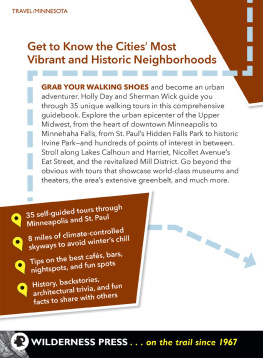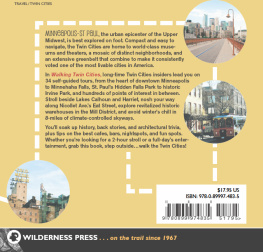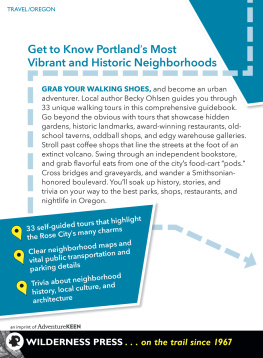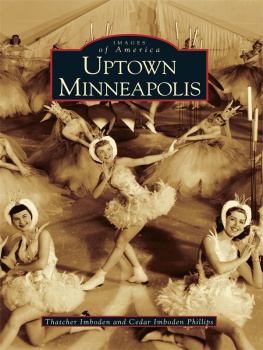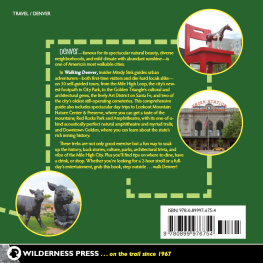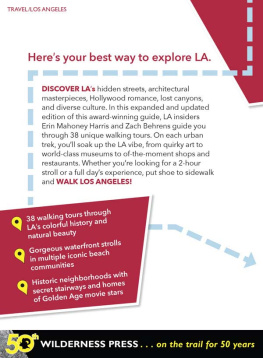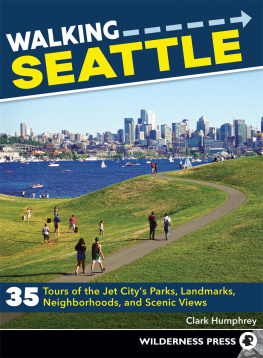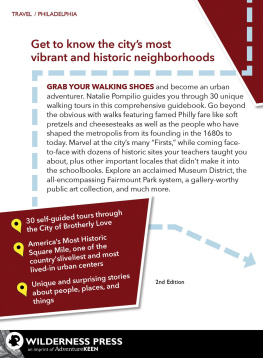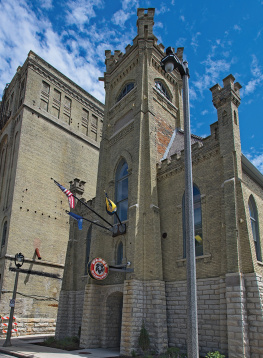

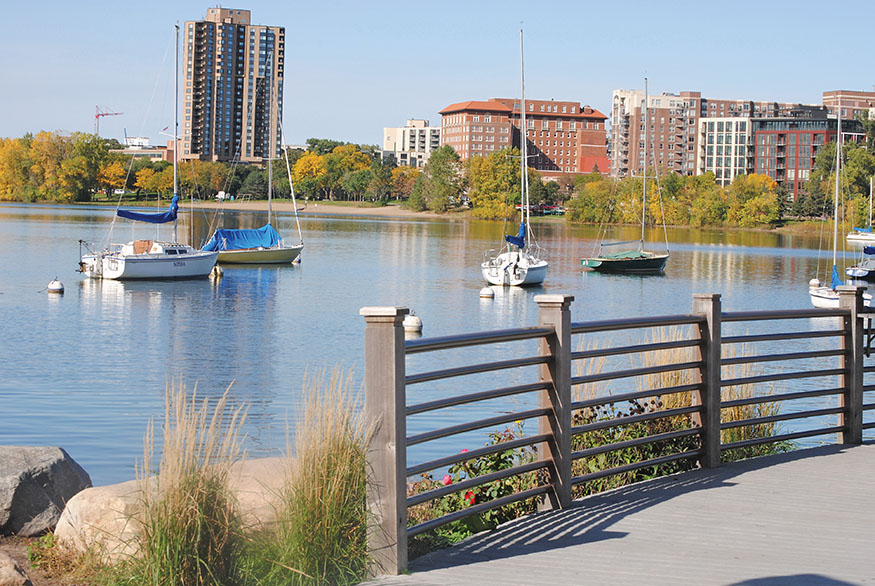

Walking Twin Cities: 35 Tours Exploring Historic Neighborhoods, Lakeside Parks, Gangster Hideouts, Dive Bars, and Cultural Centers of Minneapolis and St. Paul
Third edition, first printing
Copyright 2018 by Holly Day and Sherman Wick
Distributed by Publishers Group West
Manufactured in the United States of America
Cartography and cover design: Scott McGrew; map data: OpenStreetMap
Interior design: Lora Westberg
Project editor: Kate Johnson
Proofreader: Laura Franck
Indexer: Rich Carlson
Cover photo: Stone Arch Bridge in Minneapolis () by John Eccles/Alamy Stock Photo
Frontispiece: Boats on Lake Calhoun () by Holly Day and Sherman Wick
Interior photos: Holly Day and Sherman Wick except where noted on page and the following: : Scruggelgreen/Shutterstock
Library of Congress Cataloging-in-Publication Data
Names: Day, Holly, author.
Title: Walking Twin Cities : 35 Tours Exploring Historic Neighborhoods, Lakeside Parks, Gangster Hideouts, Dive Bars, and Cultural Centers of Minneapolis and St. Paul / Holly Day and Sherman Wick.
Description: Third Edition. | Birmingham, Alabama : Wilderness Press, an imprint of AdventureKEEN, [2018] | 2nd EDITION 2013T.p. verso. | Distributed by Publishers Group WestT.p. verso. | Includes index.
Identifiers: LCCN 2018013225| ISBN 9780899978710 (paperback) | ISBN 9780899978727 (ebook)
Subjects: LCSH: WalkingMinnesotaMinneapolis Metropolitan AreaGuidebooks. | Hiking MinnesotaMinneapolis Metropolitan AreaGuidebooks. | Outdoor recreationMinnesota Minneapolis Metropolitan AreaGuidebooks. | WalkingMinnesotaSt. Paul Metropolitan Area Guidebooks. | HikingMinnesotaSt. Paul Metropolitan AreaGuidebooks. | Outdoor recreation MinnesotaSt. Paul Metropolitan AreaGuidebooks. | Minneapolis Metropolitan Area (Minn.) Guidebooks. | St. Paul Metropolitan Area (Minn.)Guidebooks.
Classification: LCC GV199.42.M62 M5634 2018 | DDC 796.5109776/579dc23
LC record available at lccn.loc.gov/2018013225
Published by | 
| WILDERNESS PRESS
An imprint of AdventureKEEN
2204 First Ave. S., Suite 102
Birmingham, AL 35233 |
Visit wildernesspress.com for a complete listing of our books and for ordering information. Contact us at our website, at facebook.com/wildernesspress1967, or at twitter.com/wilderness1967 with questions or comments. To find out more about who we are and what were doing, visit blog.wildernesspress.com.
All rights reserved. No part of this book may be reproduced in any form, or by any means electronic, mechanical, recording, or otherwise, without written permission from the publisher, except for brief quotations used in reviews.
SAFETY NOTICE Although Wilderness Press and the authors have made every attempt to ensure that the information in this book is accurate at press time, they are not responsible for any loss, damage, injury, or inconvenience that may occur to anyone while using this book. You are responsible for your own safety and health while following the walking trips described here.
Dedication
To our grandmothers, Dorothy, Clara, Vera, and Joyce, for their guidance and inspiration
Acknowledgments
With a full year to update the walks, the writing of this edition began, for us, unusuallyon a hot summer day. All of the days that came between only reaffirmed our love/hate relationship with Minnesotas unpredictable weather. The biggest difference between writing this edition and the first was having one kid in junior high and one kid grown up and out of the house during most of the writing, as opposed to pushing a toddler in a stroller for most of the walks. Our thanks go to our two children: Wolfgang and Astrid, who are still both the most open people we know about visiting new places and trying new things. A big thankyou goes to our agent, Matt Wagner, and all the people at Wilderness Press for making this book possible.
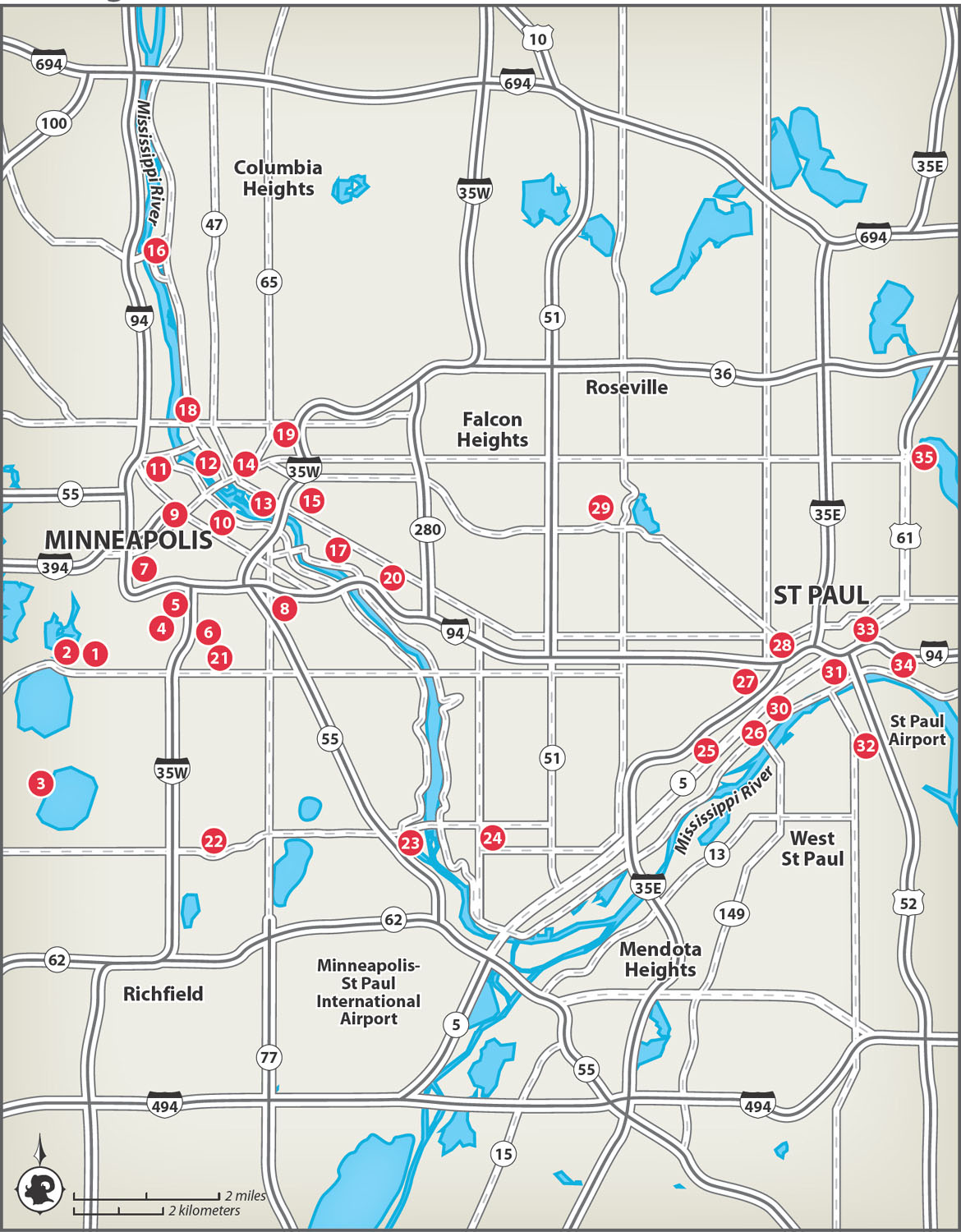
Numbers on this locator map correspond to walk numbers.
Table of Contents
Authors Note
Minnesotans love to talk about the weatherspend any time here, and youll understand why. A sunny summertime morning can easily turn into a rainy afternoon, and snow can surprise you as late as early May. A good rule of thumb is to check the forecast before heading out, and to make sure that you dress sensibly according to the time of year. Another thing to keep in mind is that as cities evolve, landmarks change. Weve tried to mention only landmarks that were sure will stand the test of time, but you never can account for bad city planning or gentrification.
When navigating Minneapolis, its especially important to pay attention to the street signs indicating Street, Avenue, North, South, Northeast, Southeast, and so on. The city is laid out in a nice, neat grid, but newcomers not used to streets bearing multiple names can get easily lost. St. Paul is a little trickier, due to its poorly plotted street design adapted to a much more difficult, hilly topography. This is why we recommend that visitors and residents alike use the map in the Hudsons Twin Cities Street Atlas; we have included Hudsons coordinates for all of the walks in this book.
One new addition to getting around the Twin Cities is the expansion into St. Paul of the Nice Ride bike system, which allows visitors to rent bicycles to get from one place to another for a nominal fee without having to resort to driving or taking the bus. This system is a large part of the reason why Minneapolis has been named Americas Best Bike City by Bicycling magazine. For more information about where to find and check out Nice Ride Bikes, see niceridemn.org. Theyve recently expanded rental transportation options along the Minneapolis riverfront with kayak and canoe rentals from Mississippi River Paddle Share (paddleshare.org). Future plans include expansion into St. Paul.
We hope that this book inspires you to investigate the great possibilities the Twin Cities offer. Once again, happy trails!

Introduction
Even though theyre often lumped together, the Twin Cities are two distinct cities with very different histories. Minneapolis is the Mill City, the City of Lakes, composed mostly of flat prairies. St. Paul is the Capital City, built on rolling hills and high river bluffs.
Culturally, the cities have their differences, too. Minneapolis is home to world-renowned theaters and modern art galleries, while St. Paul is the home of many of the states institutions, from the seat of government to the seat of the Roman Catholic Archdiocese of St. Paul and Minneapolis. Minneapolis is a newer city, which is reflected in the architecture and overall vibe, while St. Pauls older neighborhoods feature some of the most intact Victorian-era houses in the country. Because of their locations on the west and east sides of the Mississippi River, it is said that Minneapolis is more like a modern West Coast city, while St. Paul is akin to a historic East Coast city.
Next page
